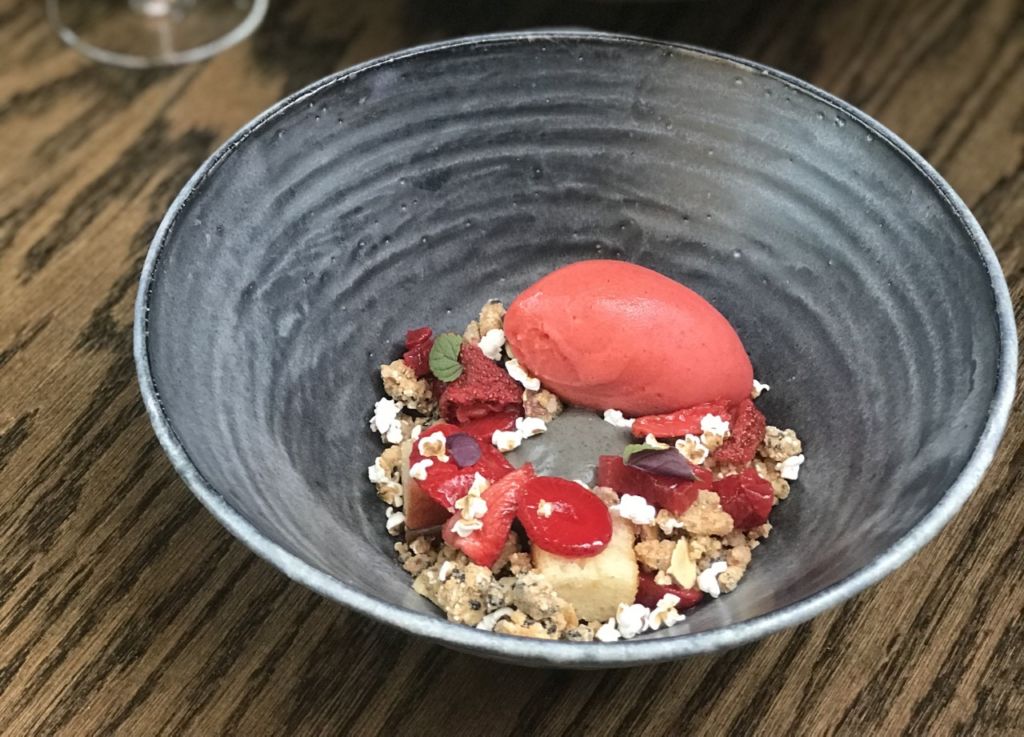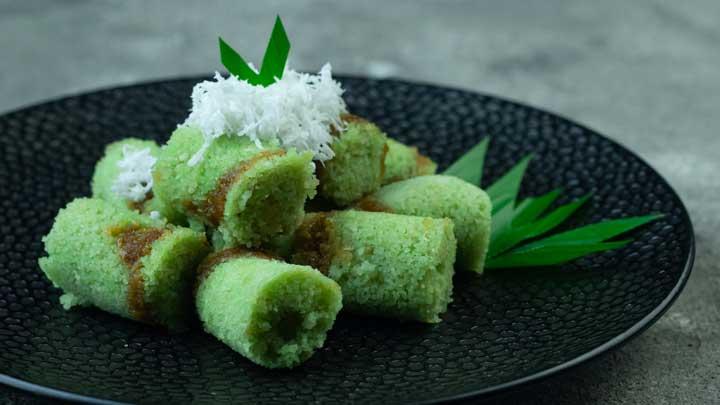When it comes to frozen desserts, gelato is undoubtedly one of Italy’s most beloved and iconic contributions to the world of food. Known for its smooth texture, rich flavor, and vibrant colors, gelato is the Italian version of ice cream, but it comes with a distinct twist—it’s creamier, denser, and packed with more intense flavors. Whether you’re indulging in a scoop on a sunny Roman street or savoring it in the comfort of your home, gelato has a way of transporting you straight to Italy with each bite.
In this article, we’ll dive into the history, ingredients, and methods of making gelato, and explore why it has become so popular worldwide. Get ready to scoop into the delicious world of Italy’s rich, creamy frozen treat.
What is Gelato?

Gelato is the Italian version of ice cream, but it’s different in several key ways. The word “gelato” comes from the Italian word for “frozen,” and the dessert itself is made with milk, cream, sugar, and flavorings like fruit, chocolate, or nuts. Unlike traditional ice cream, which typically contains a higher percentage of cream and air (known as overrun), gelato is made with more milk and less cream, resulting in a denser, creamier texture.
One of the hallmark features of gelato is its lower fat content compared to American-style ice cream. While this may sound like it would affect the flavor, the opposite is true: the lower fat allows the natural flavors of the ingredients to shine through more intensely. Furthermore, gelato is churned at a slower speed, introducing less air into the mixture, which creates a denser consistency. It’s this unique combination of ingredients and techniques that gives gelato its distinctive richness.
The Origins of Gelato
The history of gelato dates back centuries, and while its origins are often debated, it’s widely agreed that the Italian version of ice cream has deep roots in the country’s culinary tradition.
-
Ancient Beginnings: The origins of frozen desserts can be traced back to ancient Rome and China, where people used snow and ice to cool drinks and create early versions of frozen treats. Ancient Roman emperors are said to have enjoyed snow mixed with honey and fruit.
-
Renaissance Innovation: The Renaissance period is often credited with giving birth to modern gelato. The Medici family of Florence, particularly Catherine de’ Medici, is said to have brought early versions of frozen desserts to France. Some historians claim that Francesco Procopio dei Coltelli, a Sicilian, was the first to create gelato as we know it today in the 17th century. Procopio’s gelato became a hit in Paris, and by the 18th century, gelato was spreading throughout Europe.
-
Modern Gelato: In the 20th century, gelato became a cornerstone of Italian culture, with artisanal gelaterias popping up in almost every town and city. The rise of electric refrigeration and improved production methods made it easier for gelato makers to create the creamy, flavorful dessert we know today.
How Gelato is Made: The Process
Gelato is made using a very specific process that helps to give it its signature consistency and flavor. Here’s a breakdown of how gelato is traditionally made:
-
Ingredients: The base of gelato consists of milk, cream, sugar, and flavors (such as fruit, chocolate, nuts, or vanilla). Unlike ice cream, gelato uses a higher proportion of milk and less cream, which reduces the fat content and creates a denser, smoother texture.
-
Mixing: The ingredients are combined in a large mixing bowl and thoroughly blended. For fruit-based gelatos, fresh fruit purées are often incorporated into the mixture to add natural flavor and color.
-
Heating: The mixture is then gently heated to a temperature of about 180°F (82°C) to help dissolve the sugar and blend the flavors. After heating, the mixture is cooled down quickly to prepare it for churning.
-
Churning: This is where gelato differs most from ice cream. The mixture is churned at a slower speed in a special machine, which allows less air to be incorporated into the mixture. This slower churning process makes the gelato denser and creamier than traditional ice cream.
-
Freezing: Once the gelato is churned, it’s quickly frozen to preserve its smooth texture and rich flavor. The lower air content also helps prevent the formation of ice crystals, contributing to its creamy consistency.
-
Serving: Gelato is usually served at a slightly warmer temperature than ice cream, around 10-22°F (-12 to -6°C). This slightly higher serving temperature allows the flavors to be more pronounced and the texture to be smoother.
Gelato vs. Ice Cream: Key Differences
While gelato and ice cream may appear similar at first glance, they have several important differences in terms of ingredients, texture, and taste. Here’s how they stack up against each other:
| Feature | Gelato | Ice Cream |
|---|---|---|
| Milk vs. Cream | Higher milk content, less cream | Higher cream content, more milk and air |
| Fat Content | Lower fat content (about 4-8%) | Higher fat content (about 10-20%) |
| Air Content | Less air, denser texture | More air, lighter texture (higher overrun) |
| Serving Temperature | Served at a warmer temperature (10-22°F) | Served at a colder temperature (-10°F to -20°F) |
| Flavor | More intense flavor due to less fat and air | Creamier texture but often less intense flavor |
| Texture | Smooth, dense, creamy | Lighter, fluffier, more airy |
Popular Gelato Flavors
One of the best things about gelato is the vast array of flavors available. Traditional Italian gelato makers have perfected classic flavors, while modern-day gelaterias often experiment with new and exciting options. Some of the most popular flavors include:
- Vanilla (Vaniglia): A classic flavor made with vanilla beans, providing a smooth, comforting taste.
- Chocolate (Cioccolato): Rich and velvety, made with high-quality cocoa.
- Pistachio (Pistacchio): A beloved nut-based flavor that’s creamy and slightly savory.
- Strawberry (Fragola): Made with fresh, pureed strawberries for a tangy, sweet treat.
- Hazelnut (Nocciola): A nutty, earthy flavor that’s perfect for anyone who loves roasted hazelnuts.
- Lemon (Limone): A refreshing, citrusy option that’s both tart and sweet.
- Tiramisu: A nod to the famous Italian dessert, combining coffee, mascarpone, and cocoa in a delicious gelato form.
- Salted Caramel (Caramello Salato): A sweet and salty combination that’s rich and indulgent.
How to Enjoy Gelato
Gelato is typically served in small, colorful cups or on a cone, but it can also be enjoyed in cakes or pastry forms. Italians love to enjoy gelato as a casual treat, often taking a stroll through the city after their evening meal or enjoying it during a break at a gelateria.
To get the most out of your gelato experience:
- Go for the classics: Try traditional Italian flavors like pistachio, hazelnut, or stracciatella (chocolate chip gelato).
- Experiment with seasonal flavors: Depending on when you visit, some gelaterias offer seasonal fruit-based flavors or creative combinations.
- Pair with coffee: In Italy, it’s common to enjoy a scoop of gelato alongside an espresso or cappuccino.
Conclusion
Gelato is not just a dessert; it’s a celebration of Italy’s rich culinary heritage. Its creamy texture, bold flavors, and ability to evoke feelings of warmth and joy have made it a beloved treat worldwide. Whether you enjoy latoto it on a hot summer day or as a sweet conclusion to a cozy dinner, gelato brings a taste of Italy’s finest to your palate.



















